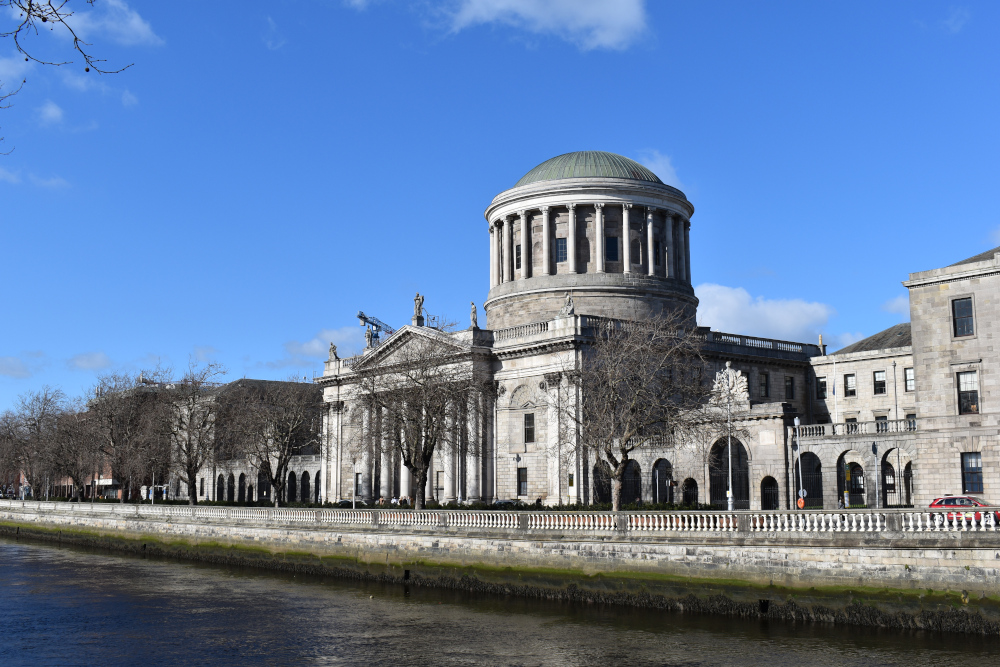High Court: Circuit Court has jurisdiction to order examination and discovery in aid of execution of monetary judgment

The High Court has delivered its first written judgment confirming that the Circuit Court has jurisdiction to order examination and discovery in aid of execution of monetary judgment and that the conclusions reached in Aerospan Board Centre (Dublin) Ltd v. Dean Furniture Ltd (1989) 7 ILT 79 were erroneous.

About this case:
- Citation:[2024] IEHC 244
- Judgment:
- Court:High Court
- Judge:Mr Justice Garrett Simons
Delivering judgment for the High Court, Mr Justice Garrett Simons determined: “It is inappropriate to apply the principle expressio unius, exclusio alterius to the operation of Order 67, rule 16 CCR. The precise purpose of this rule is to address the contingency of an omission from the CCR as compared to the RSC. The fact that there is no rule in the CCR which governs examination and discovery in aid of execution of a monetary judgment — far from being an exclusionary factor — is the factor which triggers Order 67, rule 16 CCR.”
Background
The plaintiffs succeeded in their defamation actions against the defendant company. Each plaintiff was awarded €10,000 in damages together with legal costs by the Circuit Court.
The plaintiffs subsequently applied to the Circuit Court for an order that the directors of the defendant company would attend for oral examination and would make discovery in execution of the two judgments. The directors were not parties to the defamation actions but were made respondents to that application.
In circumstances where the Circuit Court Rules (CCR) did not specifically provide for examination and discovery in execution of a monetary judgment, the plaintiffs relied upon Order 67, rule 16 CCR which provides where there is no CCR rule governing practice and procedure, the practice and procedure of the High Court may be followed.
The respondents contended that the CCR precluded examination and discovery in aid of execution of a monetary judgment in circumstances where the CCR otherwise made detailed provision for execution and so there was no lacuna in the law requiring to be filled by relying on the Rules of the Superior Courts (RSC).
The Circuit Court disagreed with the respondents but by its own volition refused the applications on grounds of delay having regard to the lapse of time between the date of the incident giving rise to the defamation actions and the date upon which the plaintiffs obtained judgment.
The plaintiffs appealed to the High Court.
The High Court
Mr Justice Simons set out Order 36, rule 7 CCR, which applies to the execution or enforcement of judgments other than judgments for the recovery or payment of money. The judge highlighted that whilst there was no express CCR provision for examination or discovery in aid of executing monetary judgments, same could be found in Order 42, rule 36 RSC.
Noting that the issue to be decided was whether Order 67, rule 16 CCR permits a judgment creditor to rely on the RSC for examination and discovery in aid of execution of a monetary judgment, Mr Justice Simons expressed that it “does not appear that this specific issue has previously been the subject of a written decision of the High Court”.
The court considered the Circuit Court’s judgment in Aerospan Board Centre (Dublin) Ltd v. Dean Furniture Ltd (1989) 7 ILT 79 which held that the Circuit Court Rules Committee must be understood to have deliberately excluded monetary judgments from the benefit of examination in aid of execution in circumstances where the CCR made express provision for same only in respect of non-monetary judgments.
Mr Justice Simons was satisfied that the approach in Aerospan was erroneous, as it had drawn an incorrect inference from the absence from the CCR of an equivalent rule to Order 42, rule 36 RSC.
The court firstly considered: “It is inappropriate to apply the principle expressio unius, exclusio alterius to the operation of Order 67, rule 16 CCR. The precise purpose of this rule is to address the contingency of an omission from the CCR as compared to the RSC…It is only in circumstances where reliance on the RSC would be inconsistent with or contradict the provisions of the CCR that reliance on Order 67, rule 16 CCR is impermissible.”
Secondly, the judge considered that Aerospan failed to honour the principle of statutory interpretation obliging it to consider the context of the provision, including the pre-existing relevant legal framework, and the object of the legislation as per Heather Hill Management Company v. An Bord Pleanála [2022] IESC 43, [2022] 2 I.L.R.M. 313.
The court emphasised:
“Aerospan makes no reference to the primary legislation which governs practice and procedure before the Circuit Court. There is no reference, for example, to section 22 of the Courts (Supplemental Provisions) Act 1961 which conferred upon the Circuit Court all jurisdiction which had been vested in or capable of being exercised by, inter alia, the former County Court. This transferred jurisdiction would have included a jurisdiction to summons a debtor for examination in aid of execution of a monetary judgment. More specifically, the County Courts had jurisdiction to compel the attendance of the debtor in aid of execution pursuant to the Debtors (Ireland) Act 1872. This Act remains operative by virtue of the Statute Law Revision Act 2007.”
Mr Justice Simons noted s.22(7) of the 1961 Act as providing that the Circuit Court would have powers of attachment, garnishee and interpleader and all ancillary powers to any jurisdiction exercisable by it. Accordingly, the judge considered that “the power to enforce its own judgments and orders by compelling the attendance of a judgment debtor (or, in the instance of a company, the directors or other officers) to provide oral and documentary evidence in relation to the means of satisfying the judgment represents an ancillary power of the Circuit Court”.
Finding that “to interpret the CCR as now excluding a power to order examination and discovery in aid of the execution of monetary judgments would be to subtract from the jurisdiction conferred by statute upon the Circuit Court”, Mr Justice Simons concluded that “there is nothing in the language of the CCR which evinces such an intention on the part of the Circuit Court Rules Committee”.
Thirdly, the court found Aerospan to be inconsistent with the modern approach to interpreting procedural rules as illustrated in Moorview Developments Ltd v. First Active plc [2011] IEHC 117, [2011] 3 I.R. 615, which emphasised that procedural rules should be interpreted in an efficient and practical manner which does not waste court resources. Mr Justice Simons considered that this aim would be best achieved by interpreting the CCR as permitting examination and discovery in aid of execution of a monetary judgment.
Finding that the plaintiffs met the threshold for securing examination and discovery in aid of execution as outlined in Allied Irish Bank plc v. O’Reilly [2015] IECA 209, the High Court also considered that “the time-limits governing the taking of steps in aid of execution of judgments and orders of the Circuit Court are prescribed by Order 36 CCR. The lapse of time is measured from the date of the judgment and order to be enforced, not from the earlier date of the accrual of the cause of action. If and insofar as the Circuit Court purported to hold otherwise in the present case, it erred in law.”
Conclusion
Accordingly, the High Court set aside the Circuit Court’s order and substituted the orders sought by the plaintiffs for examination and discovery in aid of execution in lieu thereof.
O’ Connor & Anor v. Lackabeg Ltd t/a The Arc Bar & Restaurant [2024] IEHC 244










